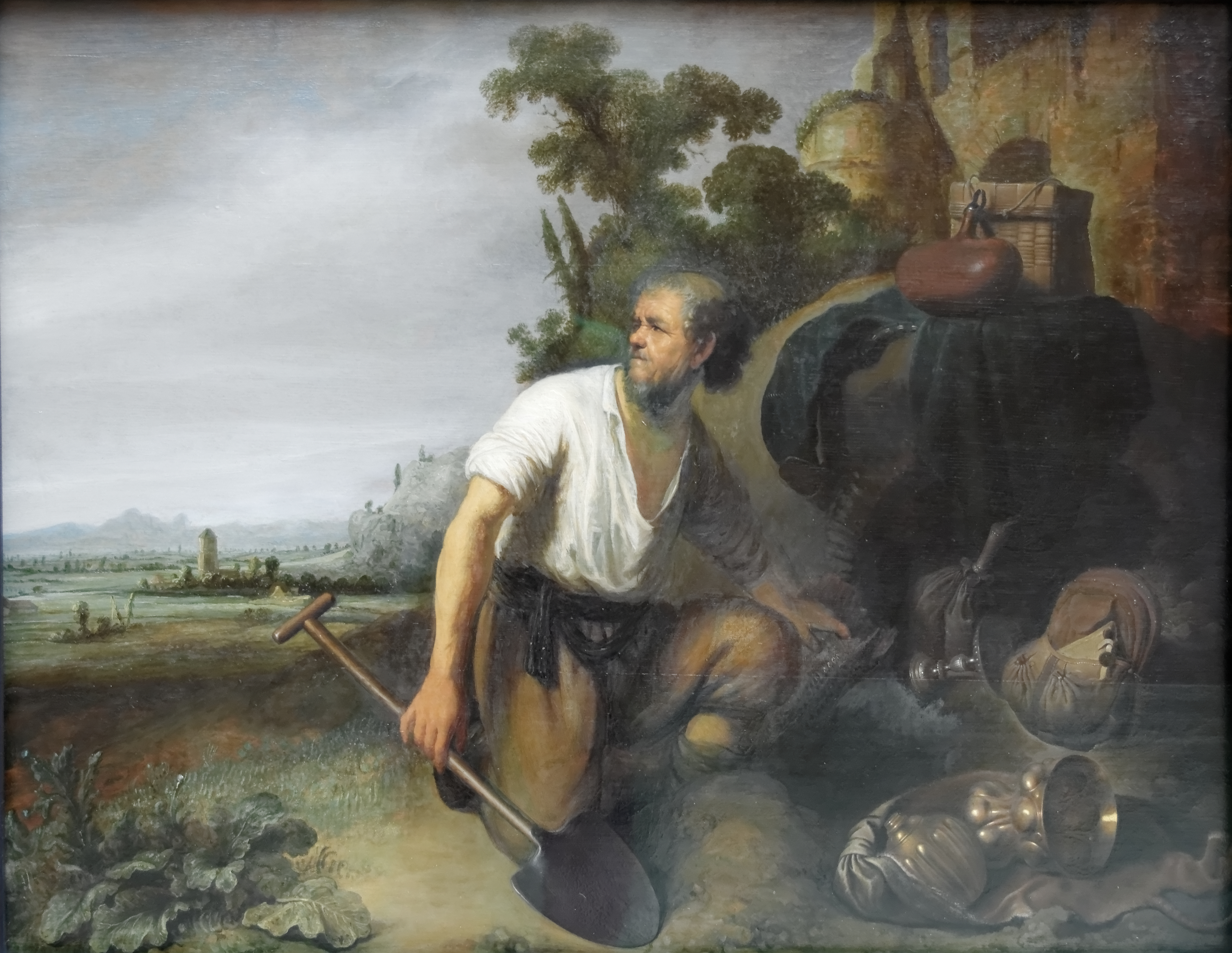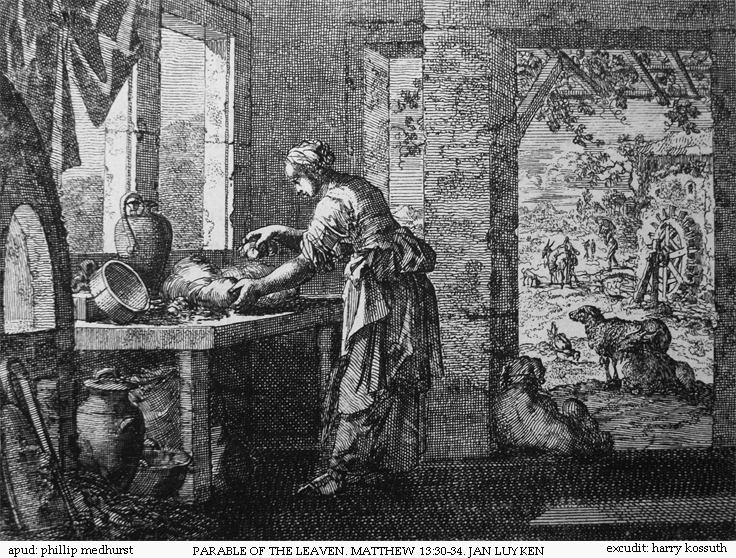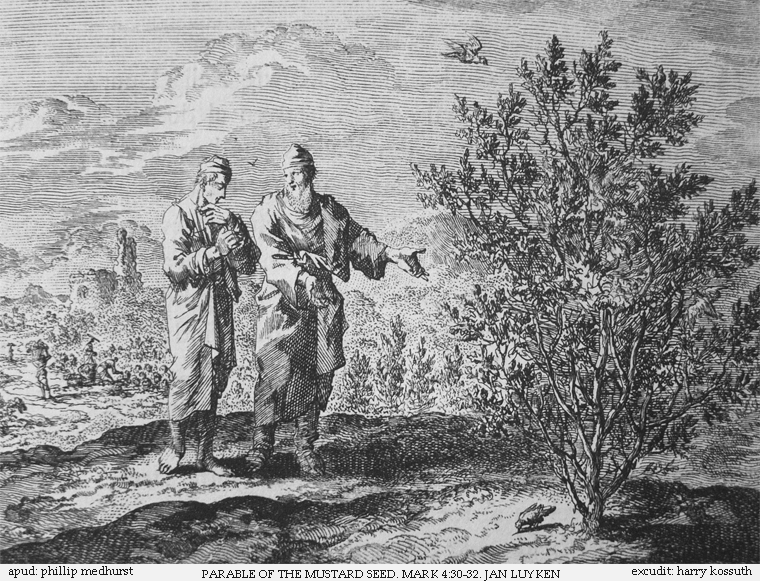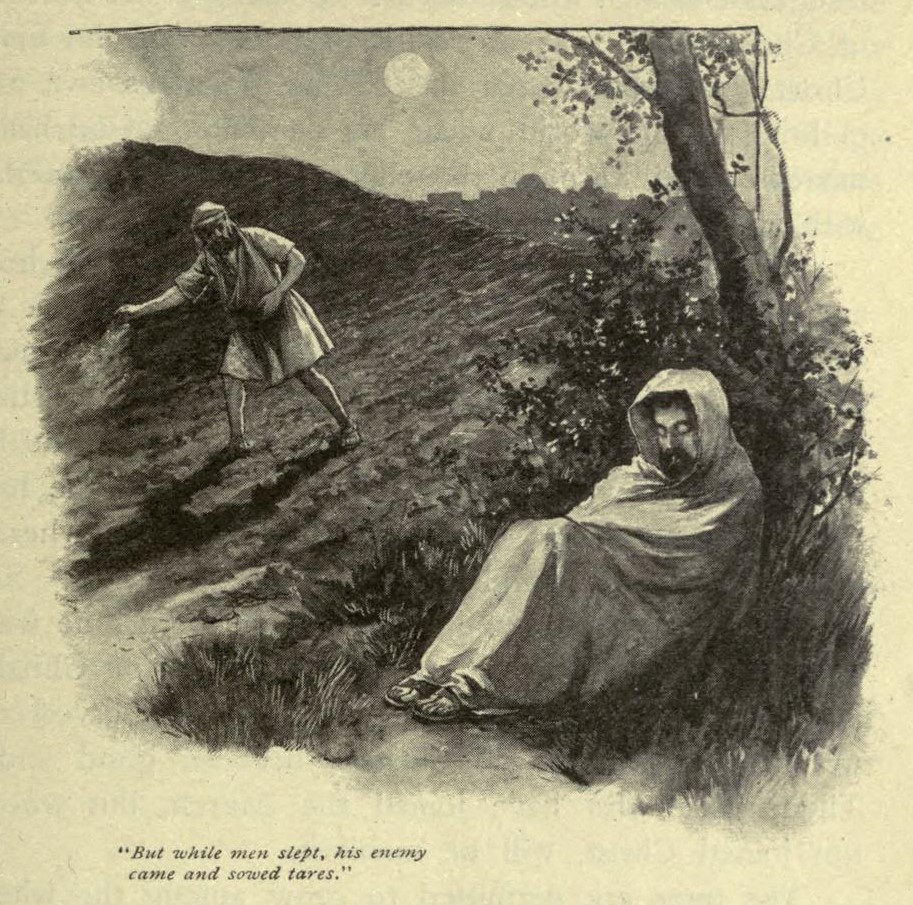|
Matthew 13
Matthew 13 is the thirteenth chapter in the Gospel of Matthew in the New Testament section of the Christian Bible. This chapter contains the third of the five Discourses of Matthew, called the ''Parabolic Discourse'', based on the parables of the Kingdom.Richard A. Jensen (1998)Preaching Matthew's Gospel: a narrative approach . pp. 25 and 158. At the end of the chapter, Jesus is rejected by the people of his hometown, Nazareth. Text The original text was written in Koine Greek. This chapter is divided into 58 verses. Textual witnesses Some early manuscripts containing the text of this chapter are: * Papyrus 103 (~AD 200; extant verses 55–56) *Codex Vaticanus (325–350) *Codex Sinaiticus (330–360) *Codex Bezae (~400) *Codex Washingtonianus (~400) *Codex Ephraemi Rescriptus (~450) * Codex Purpureus Rossanensis (6th century) *Codex Petropolitanus Purpureus (6th century; extant verses 5–32, 42–58) * Codex Sinopensis (6th century; extant verses 7–47, 54–58) Old Testa ... [...More Info...] [...Related Items...] OR: [Wikipedia] [Google] [Baidu] |
Gospel Of Matthew
The Gospel of Matthew is the first book of the New Testament of the Bible and one of the three synoptic Gospels. It tells the story of who the author believes is Israel's messiah (Christ (title), Christ), Jesus, resurrection of Jesus, his resurrection, and his Great Commission, mission to the world. Matthew wishes to emphasize that the Jewish Christianity, Jewish tradition should not be lost in a church that was increasingly becoming gentile. The gospel reflects the struggles and conflicts between the evangelist's community and the other Jews, particularly with its sharp criticism of the scribes, chief priests and Pharisees with the position that the Kingdom of God (Christianity), Kingdom of Heaven has been taken away from them and given instead to the church. Scholars find numerous problems with the traditional attribution to the Matthew the Apostle, Apostle Matthew, though it is possible the gospel incorporates a source written by the disciple. The predominant scholarly view ... [...More Info...] [...Related Items...] OR: [Wikipedia] [Google] [Baidu] |
Codex Purpureus Rossanensis
The Rossano Gospels, designated by 042 or Σ (in the Gregory-Aland numbering), ε 18 ( Soden), held at the cathedral of Rossano in Italy, is a 6th-century illuminated manuscript Gospel Book written following the reconquest of the Italian peninsula by the Byzantine Empire. Also known as Codex purpureus Rossanensis due to the reddish-purple (''purpureus'' in Latin) appearance of its pages, the codex is one of the oldest surviving illuminated manuscripts of the New Testament. The manuscript is famous for its prefatory cycle of miniatures of subjects from the '' Life of Christ'', arranged in two tiers on the page, sometimes with small Old Testament prophet portraits below, prefiguring and pointing up to events described in the New Testament scene above. History The manuscript has been dated by the Institute for New Testament Textual Research (INTF) to the 6th century. Origin Discovered in 1846 in Rossano Cathedral, the Rossano Gospels is the oldest extant illuminated manuscrip ... [...More Info...] [...Related Items...] OR: [Wikipedia] [Google] [Baidu] |
Parable Of Drawing In The Net
The Parables of Jesus, parable of drawing in the net, also known as the parable of the dragnet, is a Christianity, Christian parable that appears in the Gospel of Matthew, chapter 13, verses 47–52. The parable refers to the Last Judgment. This parable is the seventh and last in Matthew 13, which began with the parable of the Sower. It directly follows the Parable of the Pearl, which is about the Kingdom of God. Thus, it links the Kingdom of God with the final judgment—the separation for hell and heaven. The parable is also found in three non-canonical gospels: by Clement of Alexandria, in the ''Heliand'' and the Gospel of Thomas. In the Gospel of Thomas, it is referred to as the Parable of the Fisherman. Narrative The parable is as follows: Interpretation Like the parable of the Tares, earlier in Matthew 13, this parable refers to the Last Judgment, final judgment. Here, the imagery is drawn from the separation of edible from inedible fish caught by a net, probably a Sein ... [...More Info...] [...Related Items...] OR: [Wikipedia] [Google] [Baidu] |
Parable Of The Pearl
The Parable of the Pearl (also called the Pearl of Great Price) is one of the parables of Jesus Christ. It appears in Matthew 13 and illustrates the great value of the Kingdom of God, Kingdom of Heaven. This is the penultimate parable in Matthew 13, coming just before the Parable of the Dragnet. It immediately follows the Parable of the Hidden Treasure, which has a similar theme. It does not appear in the other synoptic gospels, but a version of this parable does appear in the non-canonical Gospel of Thomas, Saying 76.''Gospel of Thomas''Lamb translationan The parable has been depicted by artists such as Domenico Fetti. The parable reads as follows: Interpretation This parable is generally interpreted as illustrating the great value of the Kingdom of Heaven. Theologian E. H. Plumptre, in Anglican bishop Charles Ellicott's ''Commentary'', notes that: "the caprices of luxury in the Roman Empire, Roman empire had given a prominence to Pearl, pearls, as an article of commerce, whic ... [...More Info...] [...Related Items...] OR: [Wikipedia] [Google] [Baidu] |
Parable Of The Hidden Treasure
The Parable of the Hidden Treasure is a parable of Jesus which appears in Matthewbr>13:44and illustrates the great value of the Kingdom of Heaven. It immediately precedes the parable of the pearl, which has a similar theme. The parable has been depicted by artists such as Rembrandt. Narrative The brief parable of the hidden treasure is as follows: The setting presupposes that someone has buried a treasure. The current owner of the field is unaware of its existence. The finder is unable to conveniently extract it unless he buys the field. For a peasant, such a discovery of treasure represented the "ultimate dream."Craig S. Keener, A Commentary on the Gospel of Matthew', Eerdmans, 1999, , p. 391. Interpretation This parable is interpreted as illustrating the great value of the Kingdom of Heaven and thus has a similar theme to the parable of the pearl. John Nolland comments that the good fortune reflected in the "finding" reflects a "special privilege,"John Nolland, The Gos ... [...More Info...] [...Related Items...] OR: [Wikipedia] [Google] [Baidu] |
Parable Of The Leaven
The Parable of the Leaven, also called the parable of the yeast, is one of the shortest parables of Jesus. It appears in Matthew and Luke , as well as in the non-canonical Gospel of Thomaslogion 96. In the canonical gospels it immediately follows the Parable of the Mustard Seed, which shares this parable's theme of the Kingdom of Heaven growing from small beginnings. In the Gospel of Thomas it starts a series of three, preceding the Parable of the Empty Jar and the Parable of the Assassin. Narrative The parable describes what happens when a woman adds leaven ( old, fermented dough, usually containing lactobacillus and yeast) to a large quantity of flour (about gallons or 38 litres). The living organisms in the leaven grow overnight, so that by morning the entire quantity of dough has been raised. In the Gospel of Luke, the parable is as follows: Interpretation Ben Witherington suggests that this parable is part of a pair, and shares its meaning with the preceding para ... [...More Info...] [...Related Items...] OR: [Wikipedia] [Google] [Baidu] |
Parable Of The Mustard Seed
The Parable of the Mustard Seed is one of the shorter parables of Jesus. It appears in Matthew ( 13:31–32), Mark ( 4:30–32), and Luke ( 13:18–19). In the Gospels of Matthew and Luke, it is immediately followed by the Parable of the Leaven, which shares this parable's theme of the Kingdom of Heaven growing from small beginnings. It also appears in the non-canonical Gospel of Thomas (verse 20). Narrative In the Gospel of Matthew the parable is as follows: In the Gospel of Mark: In the Gospel of Luke: Interpretation The plant referred to here (Greek , ) is generally considered to be black mustard, a large annual plant up to tall, but growing from a proverbially small seed (this smallness is also used to refer to faith in Matthew 17:20 and Luke 17:6). According to rabbinical sources, Jews did not grow the plant in gardens, and this is consistent with Matthew's description of it growing in a field. Luke tells the parable with the plant in a garden instead; this i ... [...More Info...] [...Related Items...] OR: [Wikipedia] [Google] [Baidu] |
Parable Of The Tares
The Parable of the Weeds or Tares (KJV: ''tares'', Weymouth New Testament, WNT: ''darnel'', Douay–Rheims Bible, DRB: ''cockle'') is a parables of Jesus, parable of Jesus which appears in . The parable relates how servants eager to pull up weeds were warned that in so doing they would root out the wheat as well and were told to let both grow together until the harvest. Later in Matthew, the weeds are identified with "the children of Satan, the evil one", the wheat with "the children of the Kingdom of heaven (Gospel of Matthew), Kingdom", and the harvest with "the end of the age". A shorter, compressed version of the parable is found without any interpretation in the Biblical apocrypha, apocryphal Gospel of Thomas. Narrative The parable in the Gospel of Matthew goes as follows: Analysis The word translated "tares" in the King James Version is (''zizania''), plural of (''zizanion''). This word is thought to mean Lolium temulentum, darnel (''Lolium temulentum''), a ryegrass whic ... [...More Info...] [...Related Items...] OR: [Wikipedia] [Google] [Baidu] |
Parable Of The Sower
The Parable of the Sower (sometimes called the Parable of the Soils) is a Parables of Jesus, parable of Jesus found in , , and the apocrypha, extra-canonical Gospel of Thomas. Jesus tells of a farmer who sows seed indiscriminately. Some seed falls on the path with no soil, some on rocky ground with little soil, some on soil which contains thorns, and some on good soil. In the first case, the seed is taken away; in the second and third soils, the seed fails to produce a crop; but when it falls on good soil, it grows and yields thirty-, sixty-, or a hundred-fold. Jesus later explains to his disciples that the seed represents the Gospel, the sower represents anyone who proclaims it, and the various soils represent people's responses to it. Text The explanation given by Jesus. Context In Mark's Gospel and Gospel of Matthew, Matthew's Gospel, this parable, the explanation of the purpose of parables, and the explanation of the parable itself form part of Jesus' third or "Five ... [...More Info...] [...Related Items...] OR: [Wikipedia] [Google] [Baidu] |
Jesus Preaches In A Ship
This narrative is told in Matthew 13:1-3, Mark 4:1, and Luke 5:1-3. Owing to the vast crowds that followed him from the surrounding towns and villages to listen to his doctrine, Jesus retired to the sea coast. There he entered Sea of Galilee Boat, a boat, that he used as a pulpit, and addressed the crowd on the shore. The narrative occurs as an introduction to a set of Parables of Jesus, Jesus' parable teachings, which starts with the Parable of the Sower. Numerous artists have made this event the subject of their artwork, including, James Tissot and Alexandre Bida. Narrative Lukian version Commentary 4th-century Hilary of Poitiers comments on why Jesus sat in the ship, while the crowd remained on the shore, writing, "for He was about to speak in parables, and by this action signifies that they who were without the Church could have no understanding of the Divine Word. The ship offers a type of the Church, within which the word of life is placed, and is preached to those w ... [...More Info...] [...Related Items...] OR: [Wikipedia] [Google] [Baidu] |






